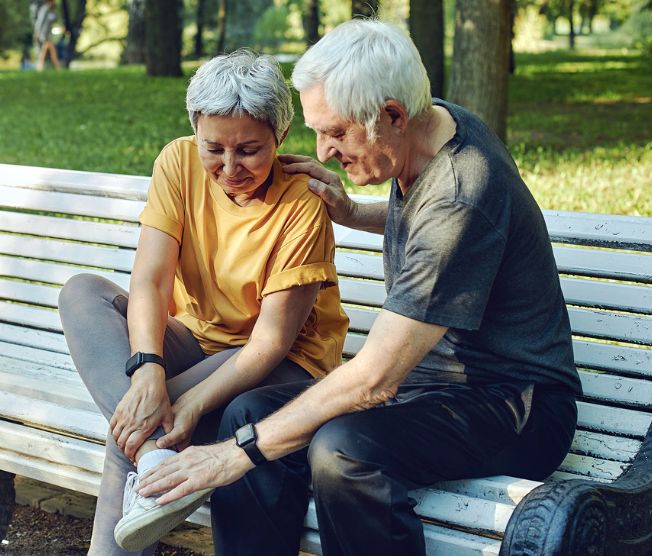 While foot and hand spasms or cramps can occur at any age, the elderly experience more of these involuntary contractions. Certain lifestyle factors further influence these often painful movements. Learn why you or a loved one may be suffering more spasms in the extremities.
While foot and hand spasms or cramps can occur at any age, the elderly experience more of these involuntary contractions. Certain lifestyle factors further influence these often painful movements. Learn why you or a loved one may be suffering more spasms in the extremities.
How Hand and Foot Spasms Occur
Muscles contract on their own but these actions are often intentional. As you reach to pick up or press down on an object, your brain transmits a signal through the nervous system that tells your muscles to tighten. However, accidental or unexpected signals can contribute to cramping and spasms in the feet, legs and hands.
In response you may feel pain, hardness, tension and tenderness. Often without warning, spasms can last anywhere from a couple of seconds to 30 minutes. In addition to discomfort and soreness, you may notice that you cannot perform certain actions like gripping a pen, walking or bending down. Your gait may also appear uneven or as if you’re limping.
While cramping and spasms often appear out of nowhere, they may be preceded by:
- A pins and needles sensation in the area about to lock up
- Fatigue or muscle weakness
- Uncontrolled muscle twitching or movement in the extremity
Causes of Muscle Cramps and Spasms in the Elderly
Unfortunately, not every incident has a clear cause. Factors contributing to muscle cramping can include:
- A lack of electrolytes
- Dehydration
- An overuse or repetitive strain injury
- Side effects of arthritis
- Physical exertion that pushes your limits
- Early signs of a neurological disorder, including multiple sclerosis, Parkinson’s or Huntington’s disease
- Nervous system damage, particularly one or more nerves directly connected to your muscles
- An early sign of kidney disease or a thyroid disorder
- Vitamin D deficiency
Addressing Muscle Cramps and Spasms
When the trigger is unknown, you’re advised to identify and limit common causes of your muscle cramps. At the same time, understand how to manage cramping or a longer spasm when it does occur by:
- Trying to get movement in the muscle. If you can, attempt to walk using the affected extremity or wave and stretch your hand until the sensation starts to dissipate.
- Knowing how to massage the affected area, which can help relax the spasm.
- Drinking half your weight in ounces to prevent dehydration, especially if you engage in physical activity. Beyond water, consider a solution fortified with electrolytes that can deliver more sodium, magnesium, potassium and other key nutrients.
- Applying a topical pain reliever to manage soreness and tension or taking an over-the-counter medication.
- Keeping your feet elevated for part of the day or wearing compression stockings, especially in older adults who may have circulation issues.
- Stretching your leg and arm muscles before exercising and understanding your limits.
- Adjusting your diet, especially if you have nighttime cramping. Get more nutrients through what you eat, take vitamin supplements and avoid triggers like caffeine.
Should the cramps and spasms become more frequent or last longer, alert your doctor to the issue, as this may signal a more significant concern.
The medical team at Avon Health Center can address any worries you have about spasms affecting you or an aging loved one. To learn more, contact us today.
« What Are the Signs of Early-Stage Alzheimer’s Disease?

